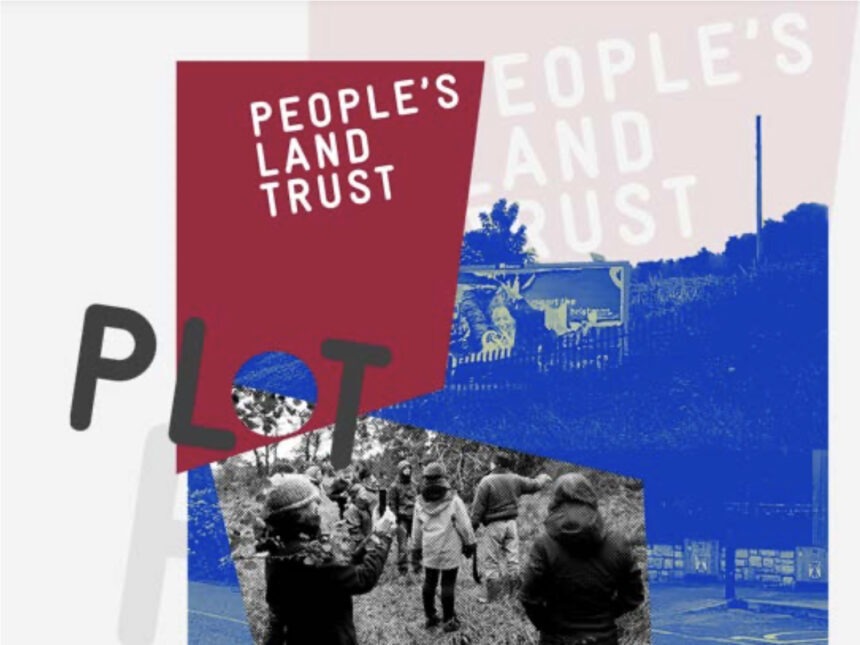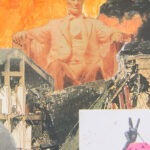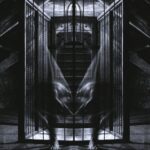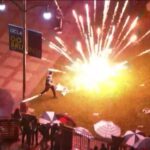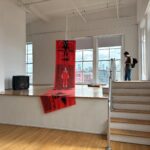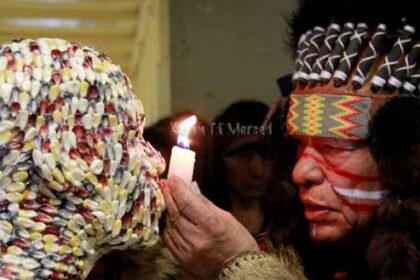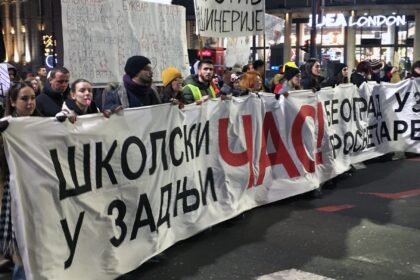An Experiment in Writing
Dr. Noelle English
The nature of art is becoming more durational, ephemeral and experiential, while the way that we write about it uses the same rigid form that we have seen for generations. As socially engaged art practice is evolving, the writing around it follows a familiar strategy of a framing, descriptive narrative that presents the purpose, strategy, rules and unfolding of the project. There is a sense in recent art theory of a disconnection between art writing and art, this is particularly true in relation to new forms such as socially engaged art. Trying to write about new art practices with the old tools of art writing is frustrating. The art review or article is through its anterior nature, a fossilization of a past moment, a unified narrative of an event which resists transmutation of meaning or perspective, meanwhile art is evolving in dialogical, poly-centred ways that are hard to pin down.
This frustration is exacerbated by the assumption that publication is the essential final result of art writing. There is an unspoken power dynamic between artists and art writers which is rooted in the monumentalising power of publishing. For this reason, it is essential that writers acknowledge the power and rigidity that the published article holds, especially in relation to ephemeral art forms. When the durational project is over, the book or article on JSTOR or in an art magazine can often be its last footprint, sealing its interpretation for the future.
In this article, I will describe how I engaged over a two year period in a transdisciplinary writing experiment with a socially engaged art project. Through a joint commitment to writing in a private way, which I will describe as “inside writing,” the expectation to produce a text for publication was surrendered in favour of an openness to experimentation. As I will describe, playing with the integral tension of alterity through transdisciplinary practice, produced a formless, un-narrated text which as it evolved not only reflected the process but also wove back into its unfolding, thereby creating a reflexive reference point in the direction of the work.
*
In early 2020, I was approached by a local group of artists who had established a socially engaged art project, PLoT 2220 in Cork city [1]. At the time when I met them, the artists were inspired by several separate yet interconnected issues surrounding land use in the city. The first of these was public resistance to new flood defences around the city centre. Our local city of Cork is built on the river Lee which, as it approaches the city centre splits into two tributaries which re-join on entering the harbour. The city centre therefore is built on marsh land and has been subject to tidal flooding for centuries. The government had proposed to build flood walls around the quays which, protesters argued, would not only deface the city but also would fail to deal with the flooding. This was and still is a strongly contested issue in the city, with businesses and protesters at odds over how to deal with the flooding, but also bringing up the question of trust in the authorities and stirring up local pride in the historic character of the city.
The second issue was the expansion of the city boundaries. In 2019, authorities had expanded the boundaries of Cork city with a view to increasing the population of the city threefold by 2040. As a city with a strong pastoral hinterland, this produced a fundamental shift in the perception of the city as its spatial identity was undergoing a huge change. Finally, like other cities in Ireland and worldwide, Cork was seeing a rise in homelessness and a lack of affordable housing. Both dereliction within the city and land rezoning, which reconfigured the availability and dependence on green spaces and public resources, exacerbated this problem and degraded the quality of community life.
For the artists of PLoT 2220, the coincidence of these issues prompted them to respond as social art practitioners. Having worked within reflective practice and community activism in the past, they wanted to engage with community members in collectively reimagining the future that they wanted for the city. They had been following the growing interest across Europe in developing legal structures and policies that would allow for the establishment of the Community Land Trust model [2]. While the Land Trust model has not been legislated for in Ireland, the artists were interested in using its history in the USA as a starting point for looking at local land and urban issues. Playing with this land trust concept, the artists also wanted to create a platform for problematizing environmental and cultural issues. By focusing on the year 2220, they placed the project within an imaginary framework and used this conceptual base to experiment in a dialogical way with the methodological frameworks of the “radical school,” as well as the Community Land Trust model [3].
*
The first informal conversation I had with the artists engaged an open-ended “see what happens” approach. Looking back, this simple acceptance of improvisation represented a central tenet of this writing. When we held out first meeting, we had no plan of what kind of form my work would take, what it would look like or how it would be used. I am not an archivist or a journalist, and I had no interest in interviews or systematic recording of events However, from the first day, I was struck by the somatic experience of attunement, through just sitting in the room with the three artists and writing down what they were saying. A particular idiosyncrasy for me was that everything was handwritten in the same hardback notebook. I never typed or voice recorded. My handwriting is poor at the best of times but I was committed to writing with a pen and paper. I enjoyed the elliptical and faulty nature of the writing and, having worked for years on a keyboard, the sensory experience of handwriting engaged me at a creative level, making me feel connected with the spirit of the process. It was a remarkable experience of turning attention outward and through the physical writing, inward at the same time. Our meetings took place about once every three weeks. I wasn’t present for all of the group’s outreach work but mostly worked with them in a studio space, to reflect on the meetings and engagements that were ongoing, to discuss how they felt the work was going and what to do next.
Because of the nature of the writing, the hand-written notes are meandering and go beyond the ostensible objectives of the session. For example, the first meeting which began with a discussion of the Land Trust model drifted into a discussion of Maori customs and joking about the relation between ceiling height and creative space. There was an idea to invite local archaeologist Eve Campbell to talk on the history of commoning in Ireland and there was a detailed discussion about forming a community of interest as the first step of the project. At the end of what had been a very positive meeting, the artists discussed their fears about the impact of lockdown and how it might cause the project to lose momentum. This contrast between the productive plan for the project and the very vulnerable expression of worry created for me a sense of the multi-dimensionality of the creative project and its ebb and flow between optimism and fear. Looking back, this discussion and the support which the artists gave each other feels poignant, as the interpersonal contact which was intended to be at the heart of the project would eventually prove to be deeply impacted by Covid lockdowns.
As the project evolved it received great support from the local Community Development Officer Noreen O Regan, who suggested that the artists run a short course as a way to invite people to participate in the community of interest. As I met with the artists to discuss this meeting with Noreen, they were animated by the feedback she had given them but were concerned about how to negotiate their own desire for a dialogical engagement with Noreen’s suggestion of a traditional course format that the public could engage with. Below is the article advertising the course which was published in the local free magazine, Mayfield Matters in 2020.
New group exploring future land use in Cork’s northside.
A new group of people are coming together over 2020/21 on the northside of Cork city to think creatively around the Community Land Trust model of urban land ownership.
Ideas are being explored through a long-term art project called the People’s Land Trust initiated by three local artists Colette Lewis, Marilyn Lennon and Elinor Rivers. The project explores the model of the Community Land Trust as a way of opening up new thinking and possibilities in Cork City around the way we use and care for urban land into the future.
Community Land Trust’s (CLT’s) first developed in rural locations in the US in the late 60’s and later in the 80’s in urban city spaces. The mechanism or model grew out of community activism, working from the civil rights movement and the idea of a “liveable city.” The model puts an emphasis on stewardship not speculation.
Over time, local communities have developed ways to ethically own and manage land that benefits people both in the present and for the future. Under this model, city land is owned by the CLT forever. Land is leased by the Trust for activities, homes, buildings and structures that the community agrees are of benefit to the community. There are now hundreds of CLTs in the United States as well as in Canada, Australia, the UK and Belgium. While “Land Trusts” exist in Ireland, a Community Land Trust model has yet to be established here.
Currently, the People’s Land Trust art project is creating a “Radical School” as a way to bring interested people together and to grow a new community with shared know-how. “Radical Schools” are an alternative space for learning that has its roots in 1960’s South America.
The thinking behind them is that learning can happen in an equal participatory way with everyone’s experience being valued and shared. In The People’s Land Trust School people will come together to learn about the Community Land Trust model and use their shared understanding to imagine how it could be adapted for Cork.
This Autumn/Winter, the People’s Land Trust School will be running a short course in the northside of the city.
Questions to be explored include: how do we as a community imagine approaches to collective stewardship and ownership of urban land? How do we leave a legacy of care for the land we live on for future generations? How do we take into account our changing world, work/life balance, and the sharing and enjoyment of outside space? What practical actions can we take to address climate change and the need to cultivate bio-diversity?
Activities will include walks/field trips, screenings, map-making, talks by local experts, discussions and creative workshops drawing on the history of land use in Ireland, local folklore, ecology and “future imagining.”
If you would like to take part in this course and/or project, please send an email for an expression of interest form to plot2220@gmail.com. Further project information can be found at www.plot2220.ie
All project activities will be run strictly along HSE Covid guidelines and may need to be adapted or postponed if necessary.
There was a good response to this advertisement and a community of interest of fifteen local people was formed. Eventually, because of Covid restrictions, talks by Dr Eve Campbell and Berlin-based architect Dr Sabine Horliz who had initiated a project adapting the Community Land Trust model in Berlin, were held online as was a screening of Holding Ground: The rebirth of Dudley Street [4]. The inability to meet in person for these events was difficult, however the online events were a welcome distraction from lockdown.
In December of 2020, following an easing of lockdown, there was an outdoor meeting between the community of interest, the artists and myself at a park called Bell’s Field which overlooks the city. Below are the notes that I took as people pointed out landmarks in the distance.
NOTES ON MEETING AT BELL’S FIELD 12 Dec 2020
Layers of building on city Cork burned several times dead bodies sold for 1000 pounds. Who’s coming emails stacking not sure if you read no notification on phone. Santa mask always Santa in school tallest kid in school. “End Direct Provision Now” sweatshirt. Churchfield leisure centre. Train northside opens out. High house pub Blarney Street. Hut Gurrahnabrahar interesting building visible from quays. Art classes roof garden. Famous community centre. Foodopolis? PO depot Lidl. Apple. Chicanes for joyriding. House roof garden. Secret ingredient sacred ingredient. In Boston time movie was made. Radical change. Margins so tight politicians. Tory island to Letterkenny to get licence catch 22. Depend on the guard. Arranmore declared itself a republic saw the navy off fish quota. The nape of the hill. Brae. lSliabh Gallun brae. Up to Kinsale/down to Limerick. You’re from where your mother is. O Keefe square mile of Shandon since famine. Family owned pub next to primary school. Be careful what you say there is probably a cousin behind you. Shandon arms house charity cottages. Back of Shandon taken over by Quay Co-op. Near Franciscian well. Richmond hill. Bought at end of crash rented as artist studio. Housing co-op independent status. Library House St Finbarr’s. Green line Ballyvolane artist studio. Kyle street conical plant echium (?) survive Irish climate. Horticulture Botanic Gardens. Douglas Street market 2017 met at Oktoberfest realised common interest. C and E at workshop in Cloughjordan community initiatives began working. Berlin land acquisition. Takes will-power. SHICC. Ireland gifted land in Offaly and pub in West Cork. Inter-regeneration land use not looking at housing land use. Imagining and visioning of future preserve and protect for 200 years. Interspecies in city room for other species. Thriving otter population. Cattle under house Galicia. Create an alternative model. SOA connection. Policy lobby government. C grew up on dairy farm. Change ownership every 6 months to get around dereliction laws. Hedge school. Worked with cathaoirleach of Seanad assigned as part of Masters programme. Trump. Undocumented. Running for Green party NW Cork city. From Watercourse Road to Blarney. Between 2020 and 2040 want to treble population of the city. High rise development. Development by the river cement wall. Flooding comes from manholes rivers underground. Medieval island St Finbarr built on the only patch of land. Government and politics masters.
Looking at these notes even five years later, I can still remember the pattern of conversation that day, oscillating between the visible, the imaginary, the public and the private. As an Irish person, I can see distinctly how the parochial nature of Irish consciousness shifts and adapts to see itself in global terms and sees the world through this lens.
*
During sessions with the artists, we would sometimes talk about the notes and how many pages I had written or what would we eventually do with them, and over time we would refer back to words or ideas from the notes. While the artists had committed to formal reflective practice as part of their work, what we were doing together was unique in its spontaneous recapitulation. It did not underpin or analyse the work already done, but instead created a meandering diversion of discussion and thought. The tone of one conversation would recall a previous discussion. The text then became a reference from which we could look back at when the idea had first come up, and its original context. This recapitulation created an interesting “folding” [5] of time in our encounters where the assumptions of linear progress were challenged by layers of memory and re-contextualisation of ideas.
This “folding” was mirrored by my own learning about socially engaged art. As names or terms came up which were known by everyone but me, the artists would pause to explain to me what they were discussing. This explanation would often lead to a conversation between themselves about foundational works or theories or books that were relevant to the project, and then this would slide into anecdotes about other projects, thereby provoking for the artists a recap of their own professional experience.
Over time, the text that was evolving along with the project achieved an emerging significance, eventually prompting our consciousness of the project to change as well. There was, as there had been from the outset, the intention of the project, i.e. its social and aesthetic intent. At the same time, however, we were seeing through the text the internal generative force of the art which existed as a separate undercurrent within the process. That force was adaptive, reactive and impressionistic. While it is hard to describe what we were creating at that point, I feel that it was something that was emerging through a destabilised, attenuated subjectivity. This attenuated subjectivity was due to our commitment to the primacy of experimentation over individual prerogative as the basis of our transdisciplinary work, making our identities in relation to the project more open to shifting perspective [6]. Because of this attenuated engagement, and as the text became longer and related to the more and more distant past, it became, through its durational nature, an agent in the direction of the project. It became a bridge to not only past conversations but past selves. More than a personal memoir, however, it was formed of multiple voices as it dynamically evolved within the present and, through that dynamic evolution, suggested a way in which this spontaneous and elliptical kind of art writing might develop as creative practice.
It’s important to acknowledge the trust given by the artists of PLoT2220 in opening up their creative space during our own experiment. I was witnessing their project but I wasn’t a part of it. While the initial idea of working with a witness in the studio seemed exciting, as time went on and issues arose and were then resolved, the reality of being witnessed on bad as well as good days was challenging. It was repeatedly through returning to the principle of trust that we were able to continue working together. I do believe that this is the fundamental ethical principle to this process of writing and one which supersedes objectivity or critical value. Trust is not censorship or control; it represents an ontological shift for writing about art that rests firstly on a principle of openness and experimentation.
Essentially, an artist who is worried if an argument will appear in print is not going to be able to open themselves to this process and similarly a writer who is held at arm’s length cannot fully get to the spirit of the process. This process of attenuation allows for a private engagement between the artist and the writer resulting in an egalitarian, everted encounter, opening a space for improvisation. There is an immense value in preserving a structured private space within a socially engaged project that is by its nature outward looking and public.
This writing “inside” the project is ambient, interpersonal, spontaneous and open-ended. It has no intended purpose and as such flows with all types of conversation; through this openness to not only intentional, procedural work but also emotional and personal expression, it captures the expenditure of human force within the creative process. Working alongside the artist in this state of attunement, the writer sees not only the end result of the project in action, but also all of the ideas that fall on the wayside, the courses not taken and the hopes and plans that don’t come to fruition. This experience of the doubts and fears as well as the successes I think is part of the spirit of the process.
*
To synopsise then, the process of the experiment. By focusing on a private, durational improvisational engagement which I describe as writing “inside” the project, the assumption that writing must entail publication was removed. Through this privacy, we experienced an egalitarian, everted encounter, opening a space for generative improvisation. Freed from the pressure of publication, and were able to experiment with the evolving text as an agent within the direction of the project.
The characteristics of social art practice, i.e. its dialogical, conversational, extroverted nature that is heavily based upon verbal communication, opened up space for the writer to see the artist’s creative process from the inside as it is unfolding. This is a wholly new space for experimentation. From my own experience, an attenuated, durational engagement of attunement with the social art project led as I said to my observation of “folding” time in the project and I have no doubt that for each writer that would choose to try out this process, their experience, observations and written outcome would be as diverse and stimulating as the art projects themselves.
With thanks to the Irish Arts Council and the library at University College Cork. While working on this project I received funding as part of the Basic Income for Artists pilot scheme which was organised by the Department of Culture, Communications and Sport in the Republic of Ireland.
Noelle English is a freelance writer and researcher. She received her PhD in the early work of Marguerite Duras from the University of Ulster where she studied under Professor Richard A York. She lives in Cork, Ireland with her daughters.
Notes
[1] www.plot2220.ie I would like to thank the three artists, Elinor Rivers, Marilyn Lennon and Colette Lewis for their support.
[2] J.A.T. Davis, On Common Ground: International Perspectives on the Community Land Trust (Terra Nostra Press,2020)
[3] Tania Brugeura, Reflexions on Arte Ùtil (Useful Art) from www.taniabrugeura.com. See also George Caffentzis and Silvia Federici “Commons against and Beyond Capitalism” in Community Development Journal, vol. 49 (pp.92-105)
[4] Dir. Mark Lipman and Leah Mahan, 1996
[5] The word “folding” was used as a description by Elinor Rivers, one of the artists in the group. It’s interesting that this term which aptly describes our experience in the studio, was also used by Deleuze in describing the doubling process of thinking “to fold to double the Outside with a coextensive inside.” Gilles Deleuze, Foucault, trans. Sean Hand (University of Minnesota Press, 1988), p.118. Also see Angelika Seppi “Simply Complicated: Thinking in Folds,” in On Folding, ed. Michael Friedman and Wolfgang Schäffner (Transcript Verlag, 2016) pp.49-76
[6] This idea of the attenuated subject was influenced by Johnnie Gratton’s study “On the Subject of the Project” in The Art of the Project: Projects and Experiments in Modern French Culture, ed. Johnnie Gratton and Michael Sheringham (Berghahn Books, 2005).

